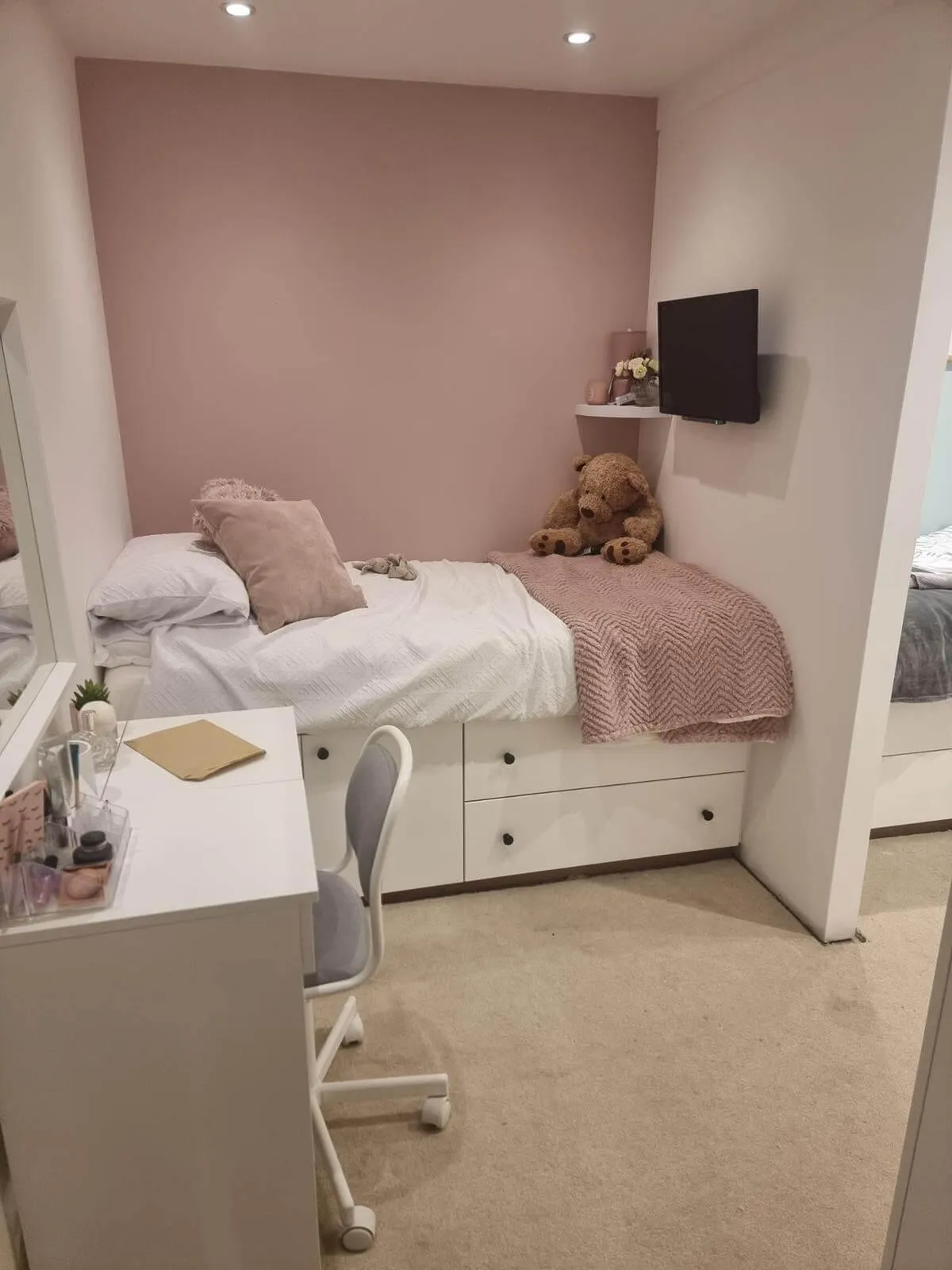Blog
Discover the benefits of bespoke joinery and custom cabinetry

Design Tips: Children's Fitted Bedrooms - JAX Bespoke
Designing the Ideal Children's Fitted Bedroom in Yorkshire: Expert Tips for Harmonising Play, Study, and Sleep
Designing a child’s bedroom that meets their needs for play, study, and sleep is essential for their development, creativity, and overall well-being. For families in Yorkshire, a thoughtfully planned bedroom can provide children with spaces to focus, relax, and let their imaginations soar. It’s about optimising the space available and establishing distinct zones for various activities. Here’s a guide tailored for Yorkshire parents on how to design a versatile children’s bedroom that effectively supports play, study, and sleep, including layout tips, storage solutions, lighting considerations, and how to involve your child in the design process.

Layout Matters: Establishing Dedicated Zones
The configuration of your child’s bedroom is crucial to ensure there’s ample room for play, study, and sleep.
While combining multiple functions in one room may seem challenging, a strategic layout can transform even compact Yorkshire homes into effective multi-functional spaces. Consider the following for each zone:
Sleeping area
Position the bed in a quiet corner of the room, away from distractions. Ideally, place it near a window to take advantage of natural light, which can enhance sleep quality. Make sure to have curtains that can effectively block out light for undisturbed slumber, especially during those long summer evenings. A comfortable mattress and soft bedding are essential for fostering healthy sleep routines. Creating a calming bedtime atmosphere can make nighttime rituals, such as reading stories, more enjoyable.
Play Area
This area should provide a safe, spacious environment for your children to explore. If possible, designate a section of the floor for play where kids can move freely, spread out their toys, and engage in imaginative play. Keeping this zone separate from the sleeping area reinforces the idea that the bed is for resting, not for play. Use soft rugs or mats to create a comfortable space. In smaller Yorkshire homes, consider vertical storage solutions to keep the floor clear for activities.
Study Space
As children grow, a dedicated study area becomes increasingly important for fostering concentration and good study habits. Position a desk or small table near a window to maximise natural light, which helps improve focus and reduces eye strain. Organise this space with the necessary supplies, such as notebooks and art materials, ensuring it remains free from distractions to encourage learning and creativity.
A professional wardrobe designer in Yorkshire can optimise your available space by suggesting innovative layouts and multifunctional furniture that cater to these zones.
For instance, space-saving beds can create additional room for a desk or play area, maximising floor space without compromising on essentials.
Efficient Storage Solutions for Organisation
Effective storage solutions are key to maintaining a tidy and functional bedroom, making it easy for children to keep their space organised. Here are some storage strategies tailored for each zone:
Sleeping Area
Incorporate bedside storage options, such as nightstands with drawers or beds with built-in storage compartments. These are ideal for storing books, nighttime essentials, or toys.
Play Area
Use bins, baskets, and open shelving to store toys. Clear containers or labeled bins make it simple for kids to find and return items independently. Open shelving can display favourite toys or books, doubling as decor while keeping everything organised.
Study Space
Keep the study area clutter-free with desk organisers, drawer units, and wall-mounted shelves. Encourage children to return items after use, fostering good organisational habits.
Harnessing Natural Light for a Healthy Environment
Natural light is known to boost mood, concentration, and overall well-being, making it especially important in a child’s bedroom. Whenever possible, design the room to maximise natural light by placing the study area near windows and using light, reflective colours to enhance brightness. Good lighting in play areas creates a cheerful atmosphere, which is especially beneficial on gloomy Yorkshire days.
For bedtime, ensure the windows have blackout curtains to block outside light. Dimmable lights or gentle nightlights can help transition from play or study to sleep, creating a soothing nighttime environment.
Engaging Children in the Design Process
Children are more likely to appreciate and take care of their rooms when they are involved in the design process. Including them in decision-making fosters their creativity and encourages ownership of their space. Here are some ways to involve your child:
Color Choices
Allow them to select the colour scheme, even if it’s just for accents. This personal touch helps them feel a connection to the space. If they prefer bold colours, consider incorporating them in smaller, easily changeable elements like throw pillows or wall decals.
Theme Selection
Encourage kids to choose a theme that reflects their interests, such as Yorkshire wildlife, their favourite book, or local sports teams. This theme can be expressed through wall art, bedding, and decor that can be easily updated as their tastes evolve.
Personalised Elements
Let your child help choose artwork or accessories that showcase their personality. Allowing them to customise their study desk or select a favourite poster fosters a sense of pride and responsibility for maintaining their room.
Storage Involvement
Kids often enjoy participating in the organisation process. Teach them how to effectively use different storage solutions, turning clean-up time into a fun game or reward system.
Designing your child’s bedroom with distinct zones for play, study, and sleep sets the foundation for a balanced and healthy lifestyle. By carefully considering the layout, implementing effective storage solutions like fitted wardrobes, maximising natural light, and involving your child in the design process, you’ll create a space that is both practical and enjoyable.
Consulting with a local expert bedroom designer can further enhance the room’s functionality, ensuring even the smallest Yorkshire homes work for your child’s needs.
With thoughtful planning, your child’s room can evolve into a sanctuary that nurtures their creativity, learning, and restful sleep, all while reflecting the unique charm of Yorkshire living.
Serving All of Yorkshire - Premium Bespoke Furniture and Kitchen Specialists
From the historic streets of York to the modern developments of Leeds, JAX Bespoke proudly serves the entire Yorkshire region with our premium furniture solutions. Our Yorkshire craftsmanship, based in Wakefield, travels across the county, bringing luxury fitted furniture to homes in every corner
Yorkshire Regions We Cover:
West Yorkshire
• Leeds
• Wakefield
• Bradford
• Huddersfield
• Halifax
North Yorkshire
• York
• Harrogate
• Ripon
• Knaresborough
• Skipton
South Yorkshire
• Sheffield
• Fulwood, Sheffield
• Rotherham
• Doncaster
• Barnsley
East Yorkshire
• Hull
• Beverley
• Bridlington
• Westwood, Beverley
• Kirk Ella



